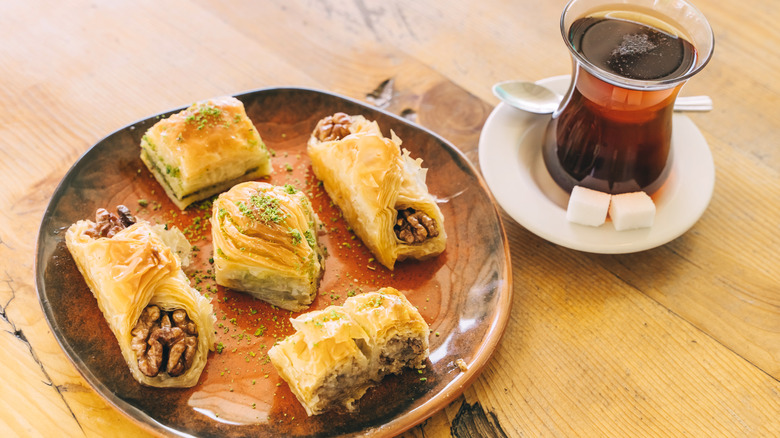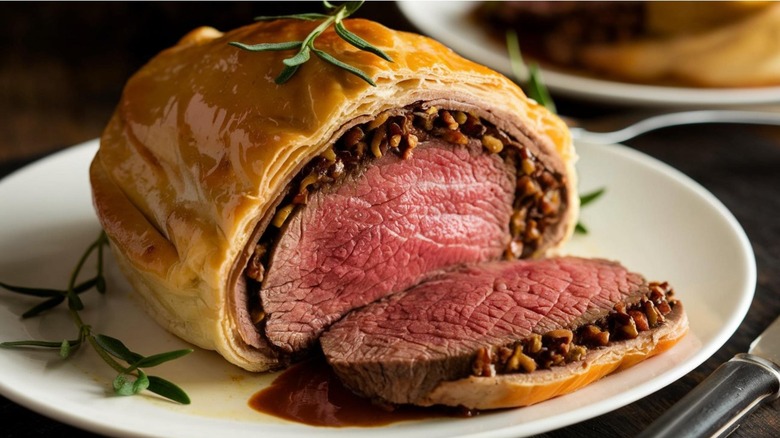How To Freeze And Defrost Phyllo Dough The Right Way
Whether used for sweet and nutty baklava, fruity apple strudel, or savory spinach hand pies, it's hard to argue with the ethereal satisfaction that is phyllo dough. This flaky ingredient is defined by its crisp, delicate layers, and is deliciously versatile in so many applications.
Like pie crust, having phyllo on hand in the freezer makes life easier when you're in the process of menu planning. You can either purchase the already frozen kind, or give your fresh or leftover phyllo a tight wrap-up, first in plastic and then in aluminum foil, before stashing away.
That said, you still need to think ahead, because if you don't defrost this stuff the proper way, you can end up with destroyed building materials before you can construct your dish. The best method to ensure your dough stays intact is to remove it from the freezer and allow it to thaw in the fridge for about 24 hours. Trying to rush the process can result in cracked, tacky, or torn dough that won't be any use to you no matter the recipe. So while it may require a little patience, you'll be grateful later when you've avoided these tricky phyllo pitfalls.
Cautiously defrosting your phyllo
You may think it'd be simpler to sit your package phyllo dough on the counter to defrost rather than resting it in the fridge, and while that may indeed speed up the process, this room temperature strategy will result in doughy disaster. A faster thaw promotes moisture, which will create soggy layers that are sticky and susceptible to ripping. Another major no-no is believing you can work with a package of dough that's not totally defrosted. If your layers are still a little frozen and too brittle, you run the risk of cracking the pieces.
If you do wind up running into a rip situation, there are a few options for recourse. You can either get rid of the offending piece (or repurpose broken bits into a crispy baked snack), or attempt to patch things up by layering on another bit of dough, which shouldn't be easily perceived after you've baked your dish. This delicate stuff may require a little extra foresight and patience, but whether you're experimenting with staple pie flavors from ancient Greece, elevating your beef Wellington, or a going for a Turkish take on the ultimate cheesecake, a properly defrosted phyllo dough will add flavor and texture to so many of your favorite recipes.

